To elevate your proposal video to cinematic heights, you'll need to incorporate sweeping aerial perspectives and choreographed drone movements. Dramatic lighting techniques and color temperature mastery will set the mood, while seamless shifts and clever editing will maintain emotional momentum. Creative framing and composition, combined with high-resolution image quality, will capture every precious detail. Focus on emotional storytelling through carefully planned key moments and genuine reactions. Don't forget to use music to enhance the narrative flow. By mastering these elements, you'll create a breathtaking cinematic experience that'll leave viewers in awe of your special moment.
Key Takeaways
- Sweeping aerial perspectives and choreographed drone movements create grand, cinematic backdrops and unique angles.
- Cinematic lighting techniques and color temperature mastery enhance mood and visual storytelling.
- Seamless transitions and clever editing techniques maintain emotional momentum and visual flow.
- Creative framing, composition, and emotional storytelling capture genuine reactions and convey the couple's journey.
- High-resolution image quality allows for crisp detail and immersive viewing experiences.
Sweeping Aerial Perspectives
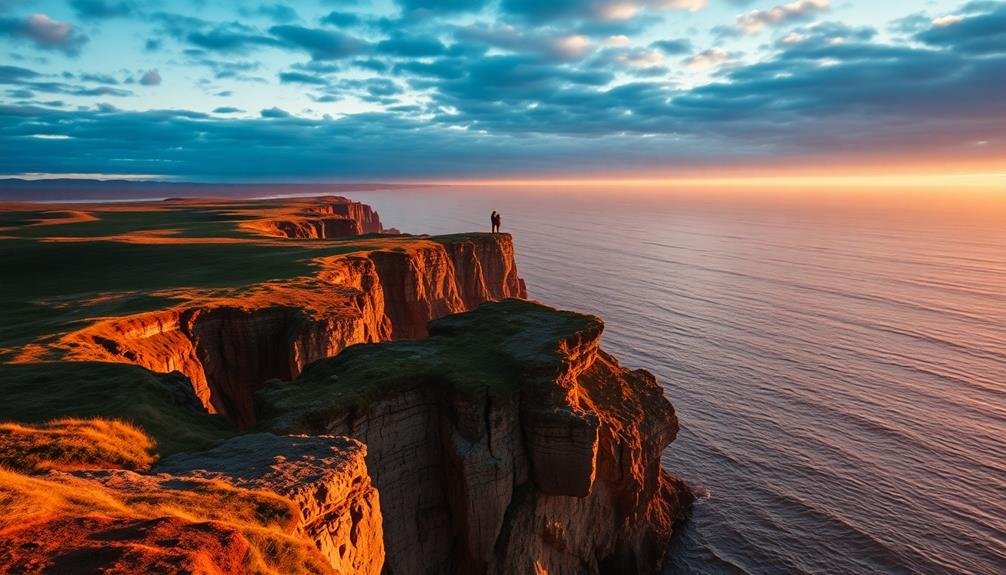
Three key elements make sweeping aerial perspectives a must-have for proposal videos.
First, they provide a grand, cinematic backdrop that elevates the entire production. You'll capture the breathtaking beauty of your surroundings, whether it's a pristine beach, a lush forest, or a stunning cityscape. This expansive view sets the stage for the intimate moment to come.
Second, aerial shots offer unique angles that ground-level filming can't match. You'll showcase the location's layout, giving viewers a sense of place and scale. This bird's-eye view can reveal hidden patterns or symmetry in the landscape, adding visual interest and depth to your video.
Lastly, drone footage creates a sense of movement and anticipation. As the camera glides smoothly through the air, you'll build tension and excitement. This dynamic approach keeps viewers engaged, leading them on a visual journey that culminates in the proposal itself.
To achieve these stunning aerial perspectives, invest in quality drone equipment and practice your piloting skills.
Remember to comply with local regulations and obtain necessary permits for drone filming.
Dramatic Landscape Reveals
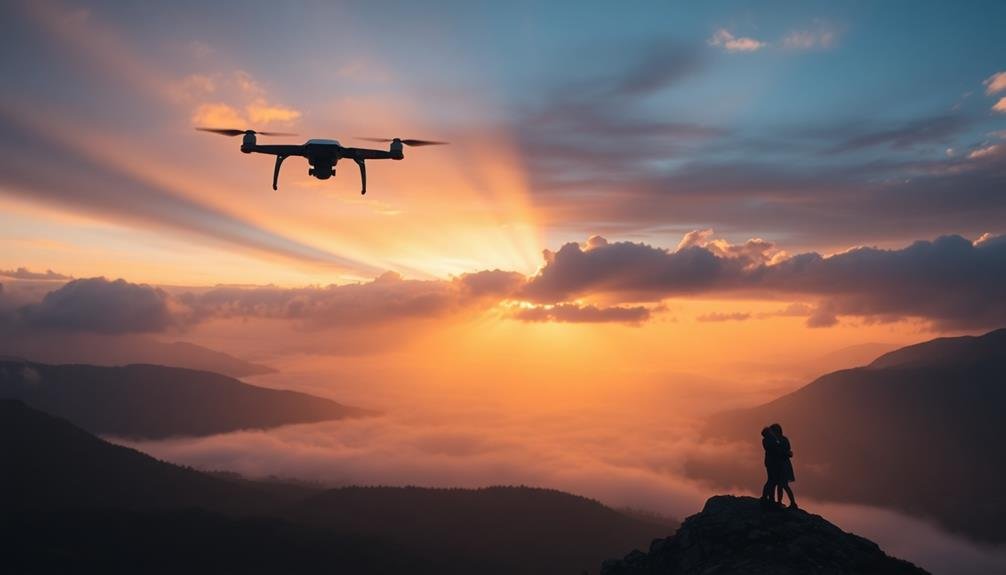
While aerial shots offer a broad perspective, dramatic landscape disclosures bring the focus back to earth with stunning impact.
You'll find these disclosures particularly effective when showcasing breathtaking natural settings or iconic landmarks. As the camera slowly pans or tracks, it gradually exposes the full splendor of the location, creating a sense of anticipation and awe for viewers.
To execute a dramatic landscape reveal, you'll want to start with a partially obstructed view, then smoothly shift to expose the entire scene. This technique works well with mountain ranges, coastal vistas, or urban skylines. You can use natural elements like trees, rocks, or buildings to initially block part of the view before the big reveal.
Here's why dramatic landscape reveals resonate with audiences:
- They create a sense of discovery and wonder
- They highlight the beauty of the chosen location
- They build anticipation and emotional investment
- They provide context for the proposal's setting
Intimate Moments From Above
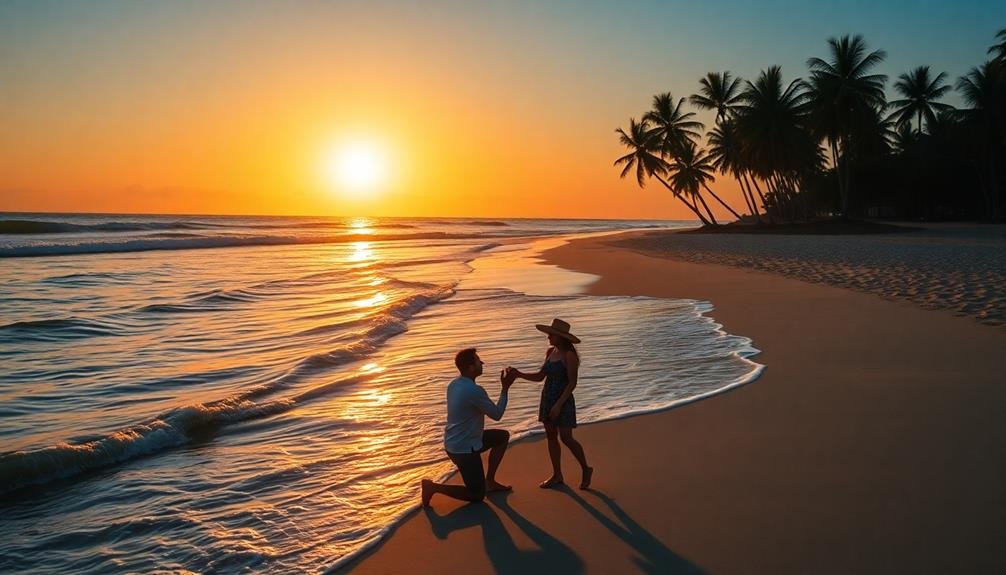
As proposal videos evolve, capturing intimate moments from above has become a popular trend. You'll often see drones hovering discreetly, offering a bird's-eye view of the couple's special moment. This aerial perspective adds a unique dimension to the proposal, allowing you to witness the entire scene unfold in a way that was once impossible.
From above, you can see the couple's body language, their surroundings, and the reactions of any nearby onlookers. The drone footage captures the proposer's nervous anticipation as they lead their partner to the chosen spot. You'll notice how they position themselves, perhaps kneeling or presenting the ring, while their partner's surprise becomes evident even from a distance.
This elevated view also showcases the location's beauty, whether it's a secluded beach, a rooftop garden, or a scenic overlook. You'll appreciate how the couple becomes the focal point within the larger landscape.
As the proposal unfolds, the drone can zoom in for closer shots or pan out to reveal the full setting, creating a cinematic experience that beautifully preserves this intimate moment for years to come.
Choreographed Drone Movements
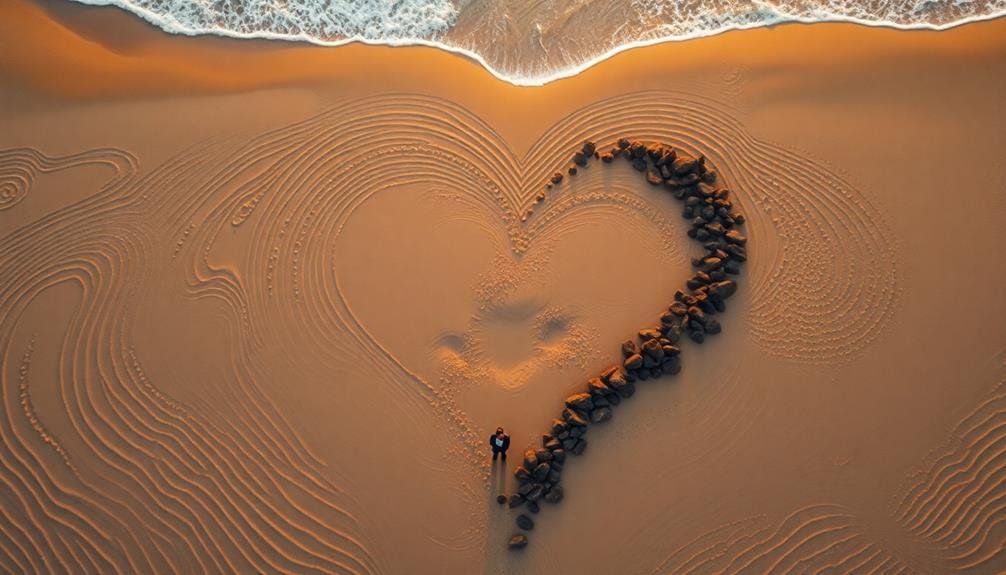
Beyond capturing static aerial views, proposal videos now incorporate choreographed drone movements to add dynamism and artistry.
You'll see drones executing precise flight patterns, creating cinematic sequences that elevate the proposal experience. These choreographed movements can reveal the setting gradually, building anticipation as the drone swoops and glides around the couple.
You're not just watching a proposal; you're experiencing a carefully crafted narrative. Drones can now perform complex maneuvers, circling the couple, zooming out to showcase the surroundings, or even delivering the ring.
These coordinated flights require skilled pilots and meticulous planning to guarantee safety and capture the perfect shot.
Here's why choreographed drone movements are transforming proposal videos:
- They create a sense of drama and anticipation
- They provide unique perspectives impossible to achieve with static cameras
- They allow for seamless changes between wide shots and intimate close-ups
- They add a professional, cinematic quality to the video
Cinematic Lighting Techniques
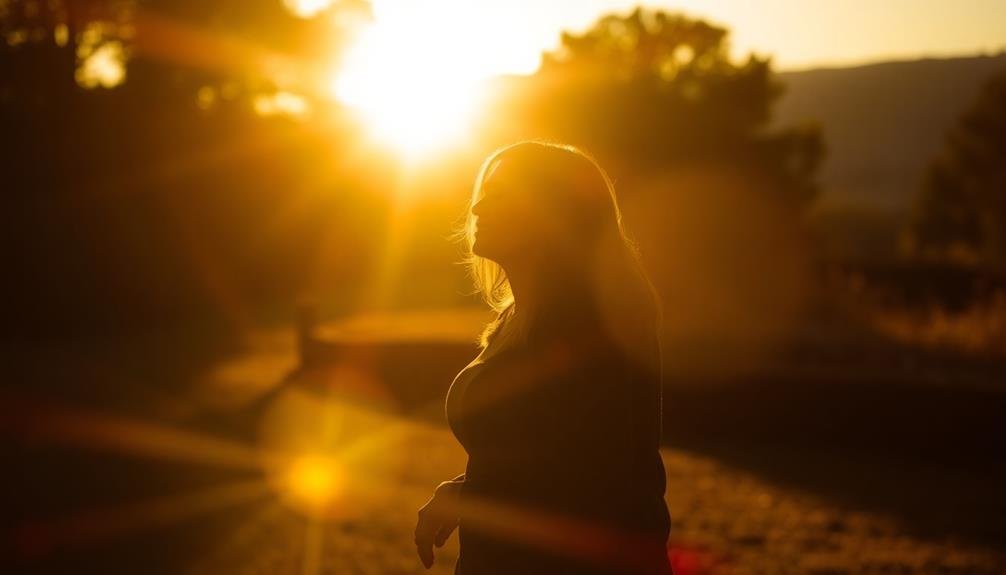
When creating a cinematic proposal video, you'll need to take into account the lighting carefully.
You can choose between natural light for a soft, romantic feel or artificial light for more control over the scene.
Mastering a three-point lighting setup will help you highlight your subject effectively, while understanding color temperature will guarantee your footage looks warm and inviting.
Natural vs. Artificial Light
Countless filmmakers grapple with the choice between natural and artificial light when crafting their proposal videos. Each option offers unique advantages and challenges. Natural light provides an authentic, organic feel that can't be replicated, but it's unpredictable and changes throughout the day.
Artificial light, on the other hand, gives you complete control over the mood and atmosphere, allowing for consistent results regardless of time or weather conditions.
When deciding between natural and artificial light, consider these factors:
- Location: Indoor or outdoor setting
- Time constraints: Ability to wait for ideal natural lighting
- Desired mood: Soft and romantic vs. dramatic and intense
- Budget: Cost of lighting equipment vs. relying on available light
You'll find that many successful proposal videos blend both natural and artificial light sources. By using reflectors or fill lights to complement natural sunlight, you can achieve a balanced, professional look.
Don't be afraid to experiment with different lighting setups to find what works best for your specific vision and location. Remember, the goal is to create a visually stunning backdrop that enhances the emotional impact of the proposal moment.
Three-Point Lighting Setup
Mastering the three-point lighting setup can elevate your proposal video from amateur to cinematic. This classic technique uses three distinct light sources to create depth, dimension, and visual interest in your shot.
Start with your key light, the primary source that illuminates your subject. Position it at a 45-degree angle to one side of the camera, slightly above eye level.
Next, add a fill light on the opposite side to soften shadows and balance the overall lighting. It should be less intense than the key light, about half the brightness.
Finally, place a backlight behind and above your subject, opposite the camera. This rim light separates your subject from the background, creating a subtle glow around their edges.
Adjust each light's intensity and position to achieve the desired effect. You can use professional lighting equipment or improvise with household lamps and reflectors.
Experiment with different color temperatures and gels to create mood and atmosphere. Remember, the goal is to enhance your subject's features and create a visually appealing scene that draws viewers into your proposal story.
Color Temperature Considerations
Beyond the basic setup, understanding color temperature is key for creating a cinematic look in your proposal video. Color temperature affects the mood and atmosphere of your footage, influencing how viewers perceive your message.
You'll need to take into account the balance between warm and cool tones, as well as how different light sources interact. To achieve a professional, cinematic look, pay attention to these color temperature considerations:
- Match your lighting to the time of day you're portraying
- Use gels to adjust the color of your lights when necessary
- Be mindful of mixed lighting situations and how they affect skin tones
- Leverage color temperature to enhance the emotional impact of your scenes
Remember that tungsten lights typically produce warm, orange tones, while daylight and LED lights often have a cooler, blue cast. You can use this knowledge to your advantage, creating contrast or harmony depending on your creative vision.
When shooting outdoors, be aware of how natural light changes throughout the day and adjust your artificial lighting accordingly. By mastering color temperature, you'll elevate your proposal video's visual appeal and create a more engaging, professional-looking final product.
Seamless Transitions Between Shots
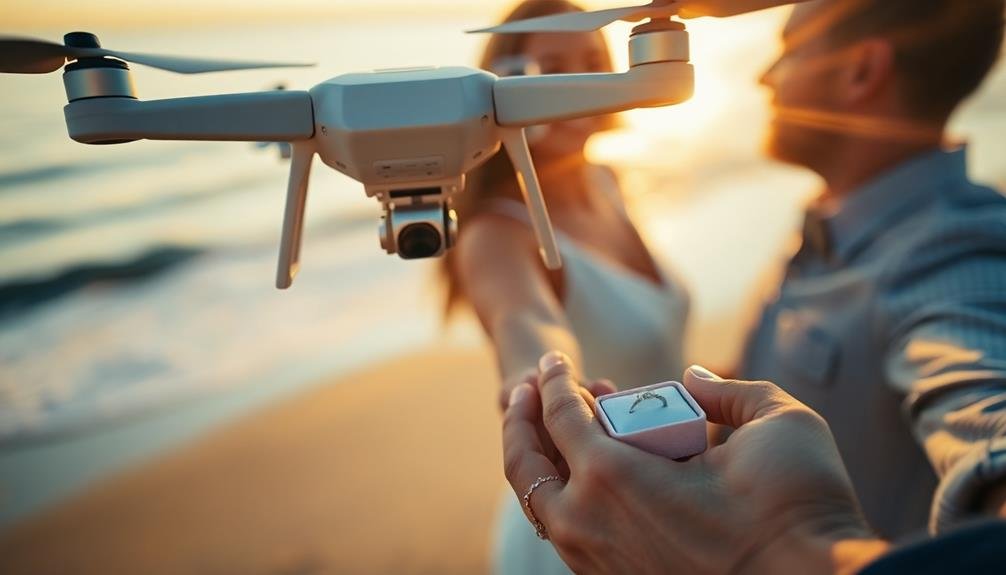
To create seamless shifts between shots in your proposal video, you'll want to master smooth camera movement techniques.
You can employ pans, tilts, and dolly shots to maintain visual flow and keep your audience engaged.
Additionally, clever editing tricks like match cuts, wipes, and dissolves can help you shift effortlessly from one scene to the next, enhancing the overall storytelling experience.
Smooth Camera Movement Techniques
Smooth camera movements and seamless shifts are essential for creating a polished, professional-looking proposal video.
You'll want to master techniques that keep your footage steady and flowing. Consider investing in stabilization equipment like gimbals or steadicams to reduce shaky handheld shots. Practice slow, controlled pans and tilts to add dynamic movement without jarring your viewers.
For tracking shots, use a dolly or slider to achieve smooth, linear motion. These tools allow you to create cinematic reveals or follow your subjects effortlessly.
When capturing wider scenes, try a crane or jib arm for sweeping aerial-like shots that add grandeur to your proposal video.
Here are four key benefits of incorporating smooth camera movements:
- Enhances visual storytelling
- Keeps viewers engaged and immersed
- Conveys a sense of professionalism
- Elevates production value
Clever Editing Tricks Employed
While smooth camera movements lay the foundation for a polished proposal video, clever editing techniques can take your footage to the next level.
One of the most effective tricks is mastering seamless shifts between shots. You'll want to focus on creating a natural flow that doesn't jar the viewer or break the emotional momentum.
Try using match cuts, where you align similar shapes or movements across different scenes. This technique can create a visually pleasing continuity.
Another powerful tool is the J or L cut, where audio from the next shot begins before the visual shift or vice versa. This helps blend scenes together more smoothly.
Don't underestimate the impact of well-timed fade shifts. A subtle fade to black can signify the passage of time or a change in location.
For a dreamy, romantic effect, experiment with light leaks or lens flares between shots.
Creative Framing and Composition
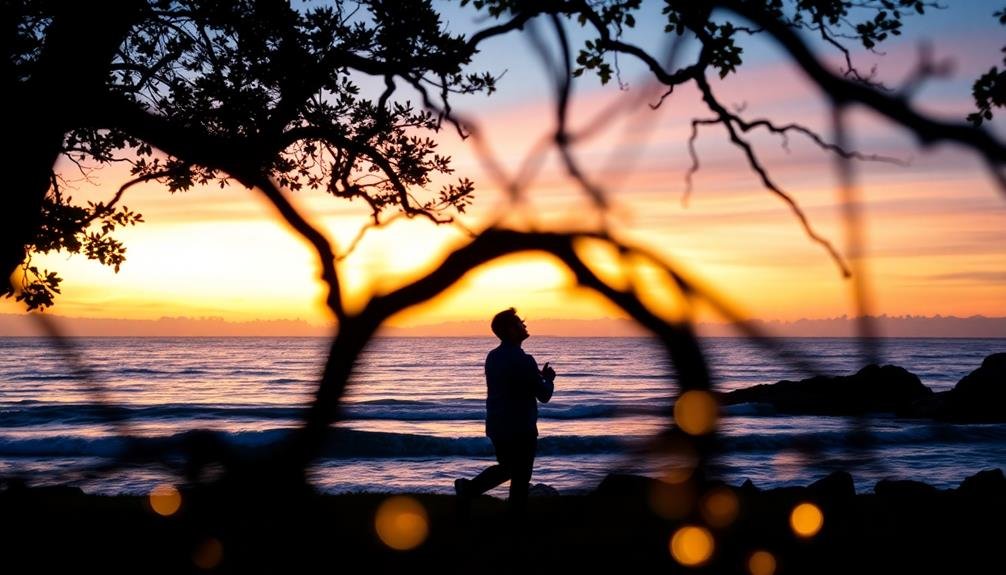
Creative framing and composition often elevate proposal videos from mundane to memorable. When you're planning your shot, consider the rule of thirds, leading lines, and symmetry to create visually appealing scenes.
Don't be afraid to experiment with unique angles or perspectives that add depth and interest to your footage. Use foreground elements to frame your subjects, creating a sense of depth and drawing the viewer's eye to the main action.
Pay attention to the background and guarantee it complements rather than distracts from the proposal moment. Natural settings like beaches or parks can provide stunning backdrops, while urban environments offer interesting architectural elements.
Consider incorporating symbolic locations that hold meaning for the couple.
To truly elevate your proposal video, keep these cinematic techniques in mind:
- Use shallow depth of field to isolate the subjects
- Incorporate dynamic camera movements like dolly shots or steadicam
- Play with light and shadow to create mood and atmosphere
- Utilize negative space to emphasize emotional moments
Emotional Storytelling Through Footage
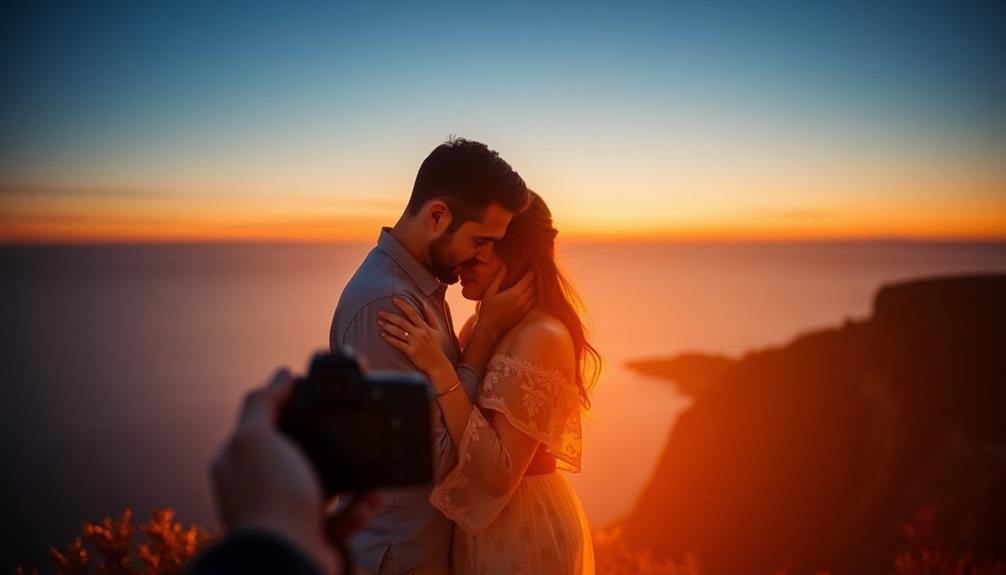
Capturing raw emotions is the heart of any proposal video. You'll want to focus on telling a compelling story through your footage that resonates with viewers. Start by planning key moments that highlight the couple's journey, from their first meeting to the proposal itself.
As you film, look for genuine reactions and interactions that convey love, excitement, and anticipation. Don't be afraid to get creative with your shot selection. Use close-ups to capture subtle expressions and body language that speak volumes. Incorporate wide shots to set the scene and provide context for the emotional moments.
Remember to vary your pacing, using slow-motion for particularly poignant scenes and quicker cuts to build tension. Consider adding personal touches that reflect the couple's unique relationship. This could include footage of shared hobbies, meaningful locations, or inside jokes.
As you edit, carefully select music that enhances the emotional impact of each scene. Pay attention to the flow of your story, ensuring that it builds to a powerful climax with the proposal itself. By focusing on authentic emotions and crafting a narrative arc, you'll create a proposal video that truly moves your audience.
High-Resolution Image Quality
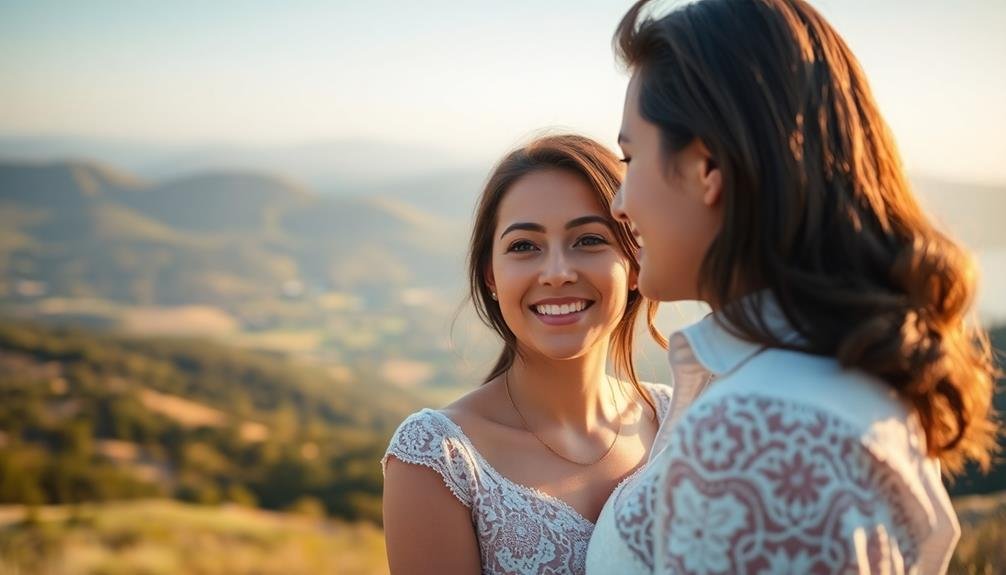
How can you guarantee your proposal video looks as stunning as the moment itself? The key lies in high-resolution image quality. By capturing your special moment in crisp, clear detail, you'll create a keepsake that truly does justice to the occasion.
Invest in a camera capable of shooting in 4K or even 8K resolution to assure every nuance is preserved.
Don't overlook the importance of proper lighting and focus. Even the highest resolution can't save poorly lit or blurry footage. Consider hiring a professional videographer who understands the technical aspects of capturing high-quality images, especially in challenging environments like dimly lit restaurants or outdoor settings.
Here's why high-resolution matters for your proposal video:
- It allows for post-production editing without loss of quality
- Future-proofs your video for viewing on larger, higher-resolution screens
- Captures fine details like the sparkle of the ring or tears of joy
- Creates a more immersive viewing experience, making viewers feel present in the moment
Frequently Asked Questions
How Much Does a Cinematic Proposal Video Typically Cost?
You'll typically spend between $1,000 to $5,000 for a cinematic proposal video. Costs vary based on location, equipment, crew size, and editing complexity. High-end productions can reach $10,000 or more for truly extravagant proposals.
What Equipment Is Essential for Filming a High-Quality Proposal Video?
You'll need a high-quality camera, preferably a DSLR or mirrorless, with a good lens. Don't forget a sturdy tripod, external microphone, and lighting equipment. A gimbal can help for smooth shots. Memory cards and spare batteries are essential.
How Long Should a Cinematic Proposal Video Be?
You'll want to keep your cinematic proposal video between 3-5 minutes. It's long enough to build emotion and showcase the moment, but short enough to maintain viewer interest. Don't drag it out unnecessarily.
Are Actors or Extras Ever Used in Cinematic Proposal Videos?
You'll find that some cinematic proposal videos do use actors or extras. They're often employed to create a more elaborate setup, add surprise elements, or help stage the perfect moment. It's not uncommon in high-production proposals.
What Are the Legal Considerations for Filming Proposal Videos in Public Spaces?
You'll need to contemplate privacy laws and location permits when filming proposals in public. Get consent from those captured on camera, respect private property, and check local regulations for specific requirements in public spaces you're using.
In Summary
You've seen how proposal videos can reach cinematic heights through aerial shots, dramatic reveals, and intimate moments captured from unique angles. With choreographed drone movements, cinematic lighting, and seamless shifts, you're able to create a visually stunning experience. Don't forget creative framing and composition to enhance the storytelling. By focusing on emotional narratives and ensuring high-resolution quality, you'll elevate your proposal video to a truly unforgettable cinematic masterpiece that'll be cherished for years to come.

As educators and advocates for responsible drone use, we’re committed to sharing our knowledge and expertise with aspiring aerial photographers.
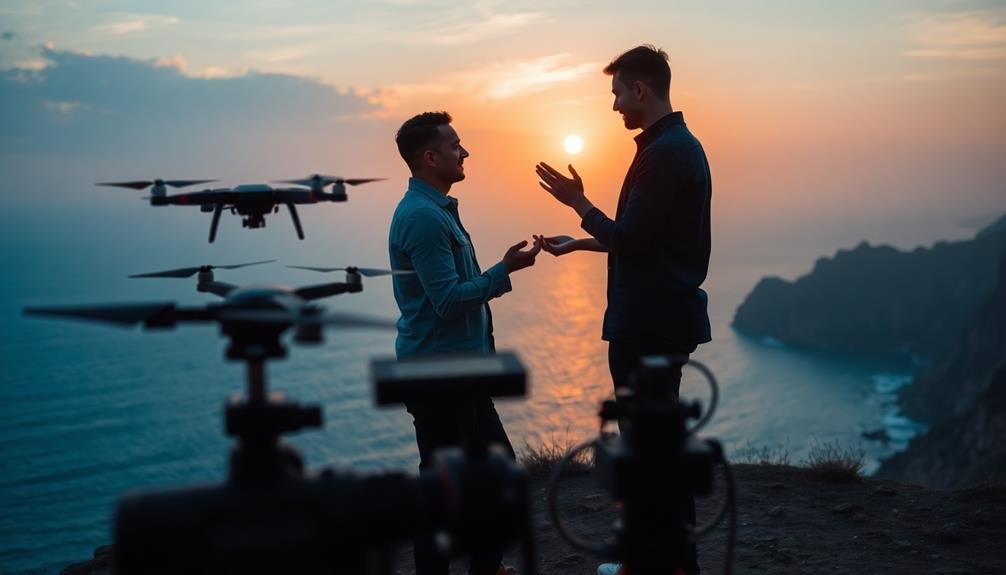
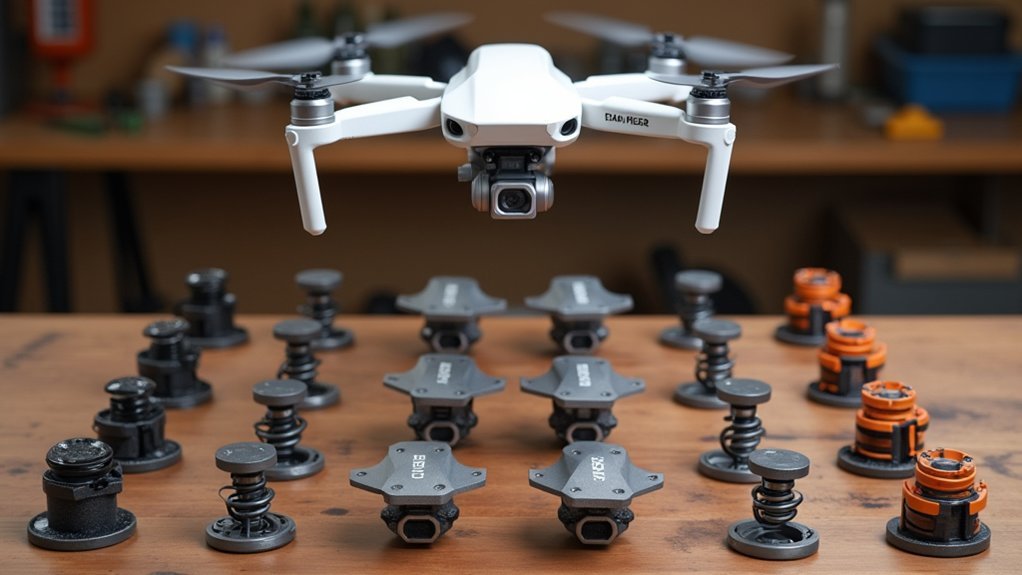
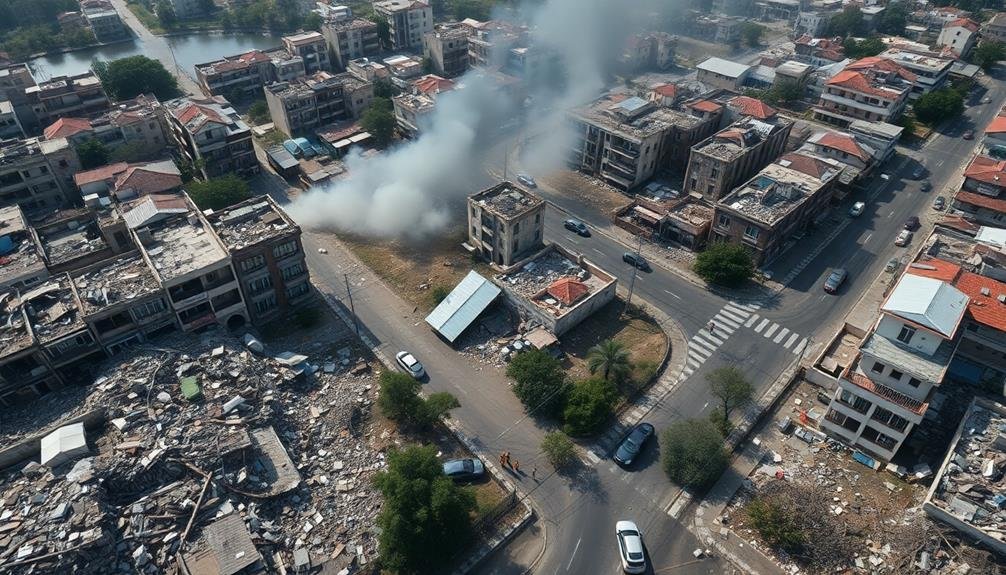
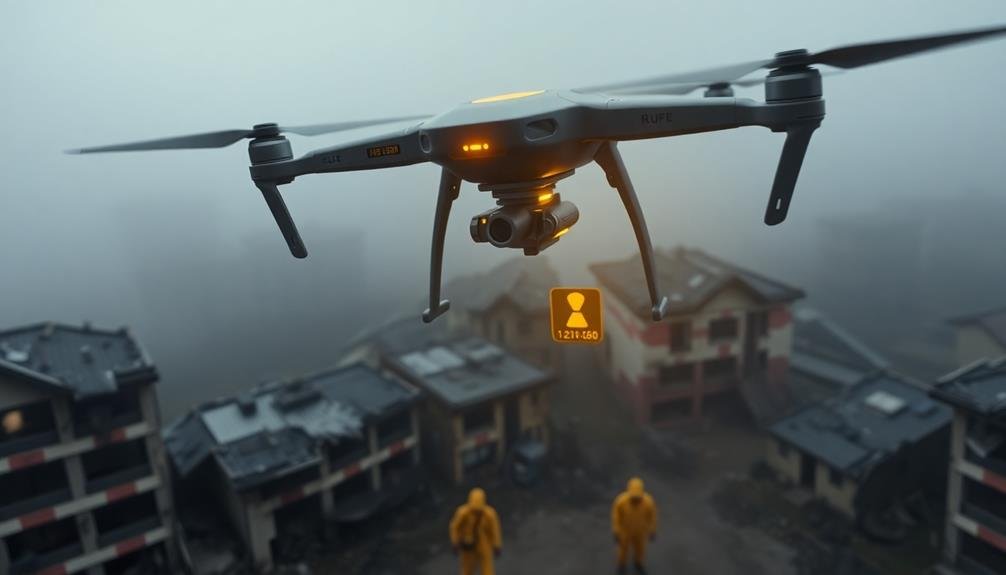
Leave a Reply